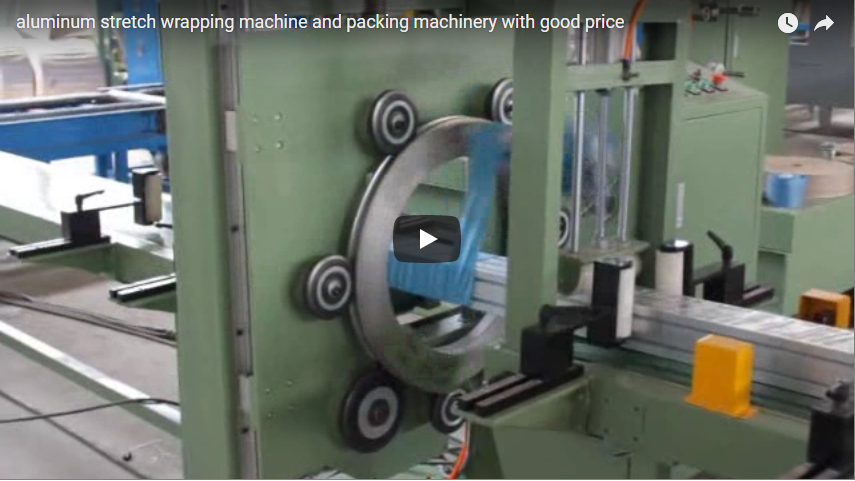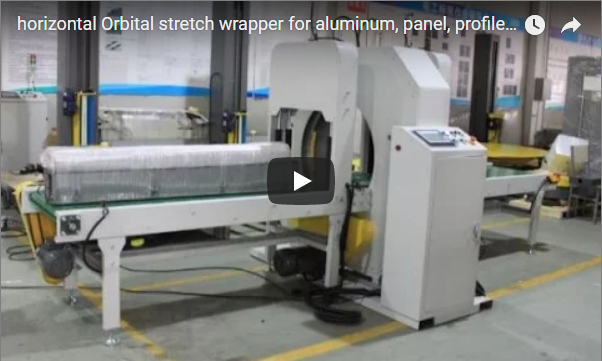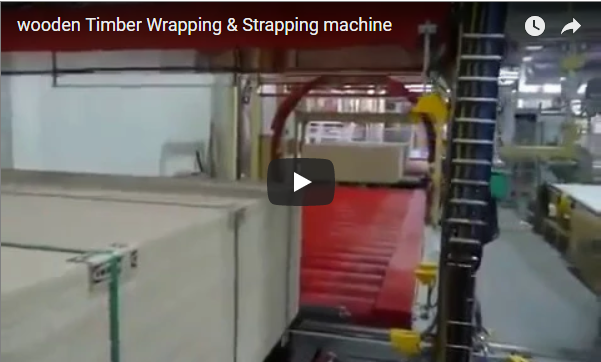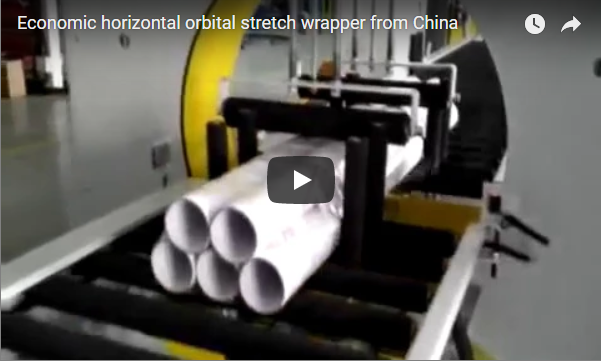Optimizing Protection and Efficiency: A Deep Dive into Partial Film Wrapping with Orbital Wrappers
In today's demanding manufacturing and distribution environments, ensuring product integrity during transit while managing costs is paramount. For items that don't require full encasement—like long profiles, bundled goods, or products needing protection only in specific areas—partial film wrapping using an orbital wrapper presents a highly efficient and cost-effective packaging solution. This method moves beyond traditional pallet wrapping, offering targeted protection precisely where it's needed.
1. Understanding Partial Film Wrapping with Orbital Technology
Partial film wrapping focuses protective stretch film application on specific sections of a product or bundle. Unlike full wrapping that cocoons the entire item, partial wrapping might involve:
- Applying bands of film at intervals along a long product (e.g., pipes, lumber, extrusions).
- Securing the ends of a product to prevent shifting or damage (e.g., doors, windows).
- Unitizing a bundle by wrapping only the central portion.
Orbital wrappers, also known as horizontal wrappers, are uniquely suited for this task. The product typically moves horizontally on conveyors through a rotating ring assembly. A film carriage mounted on this ring orbits around the stationary or slowly moving product, dispensing stretch film precisely onto the targeted areas. This mechanism is ideal for long, bulky, or irregularly shaped items that are difficult or impossible to wrap on a conventional turntable pallet wrapper.
2. Technical Deep Dive: How Orbital Wrappers Achieve Precision Partial Wrapping
The effectiveness of partial wrapping hinges on the technology within the orbital wrapper. Key components and their roles include:
- Rotating Ring Assembly: The core of the machine, available in various diameters to accommodate different product cross-sections. Its rotational speed influences throughput.
- Film Carriage: Holds the stretch film roll. Modern carriages often feature powered pre-stretch capabilities (up to 300% or more), significantly reducing film consumption and improving load containment force. Adjustable tension control is crucial for handling different product types.
- Conveyor System: Transports the product through the wrapping ring. Variable speed controls allow synchronization with production lines. Powered roller or belt conveyors are common.
- Clamping and Cutting System: Automatically grips the film start, wraps the product, and then cuts and seals the film tail (often using heat or wipe-down mechanisms) for a clean, secure finish.
- Programmable Logic Controller (PLC): The machine's brain. Allows operators to program specific wrap patterns, including the start/stop points for partial wraps, the number of wraps at each location, film tension, and conveyor speed. Sensors detect the product's leading and trailing edges to trigger the wrap cycle accurately.
Key Technical Parameters to Consider:
- Ring Diameter (mm/inch): Determines the maximum product cross-section (W x H) that can pass through.
- Maximum Product Dimensions (L x W x H): Defines the limits of the machine's handling capacity.
- Conveyor Speed (m/min or ft/min): Impacts overall line throughput.
- Film Roll Specifications: Accepts specific film widths (e.g., 125mm, 250mm), core diameters, and maximum roll diameters.
- Pre-Stretch Ratio (%): Indicates potential film savings and wrap tightness (e.g., 150%, 250%, 300%).
- Control System: User interface type (touchscreen common), programming flexibility, diagnostic capabilities.
3. The Operator's Perspective & Real-World Applications
From an operational standpoint, modern orbital wrappers are designed for user-friendliness. Touchscreen interfaces often guide operators through setup and parameter adjustments. While routine operation requires minimal training, understanding film threading, tension adjustments, and basic troubleshooting (like clearing film breaks) is essential for maintaining uptime. Regular maintenance, particularly of the ring bearings, film carriage rollers, and cutting/sealing mechanism, is vital for long-term reliability.
Where is partial orbital wrapping making a difference?
- Building Materials: Wrapping bundles of lumber, PVC pipes, metal studs, aluminum extrusions, doors, and windows to protect edges and surfaces and maintain bundle integrity.
- Furniture: Securing components like table legs, panels, or assembled pieces, often just wrapping the ends or corners to prevent scratches.
- Textiles & Flooring: Wrapping rolls of carpet, fabric, or artificial turf, often banding the ends and middle.
- Automotive: Bundling exhaust pipes or other long components.
Personal Experience Insight: Implementing partial wrapping on an orbital wrapper for a door manufacturer highlighted significant benefits. Previously, manual wrapping was slow and inconsistent, leading to frequent edge damage complaints. By programming the orbital wrapper to apply tight film bands only at the top, bottom, and middle of each door stack, they achieved:
- 80% reduction in shipping damage claims related to edges.
- 30% savings in stretch film consumption compared to attempting full wraps manually.
- Increased packaging throughput by 60%, alleviating a production bottleneck.
4. Key Benefits for Industrial Distributors and Manufacturers
Adopting partial film wrapping with orbital technology offers tangible advantages:
- Enhanced Product Protection: Concentrates film strength precisely where needed, safeguarding vulnerable areas against scratches, moisture, and shifting during handling and transit.
- Increased Throughput and Efficiency: Automates a previously manual or semi-automatic process, significantly boosting packaging speed and freeing up labor for other tasks. Consistent wrap cycles ensure predictable output.
- Material Cost Savings: Uses substantially less stretch film compared to fully wrapping items, directly reducing consumable costs and environmental impact. Powered pre-stretch further maximizes film yield.
- Improved Load Stability and Handling: Securely unitizes bundles or stabilizes individual items, making them easier and safer to handle, store, and transport.
- Versatility and Customization: Machines can often be adjusted or programmed to handle a wide range of product dimensions and wrap requirements, providing flexibility for diverse product lines.
5. Selecting the Right Orbital Wrapper for Partial Film Application
Choosing the appropriate orbital wrapper involves considering:
- Product Characteristics: Dimensions (L, W, H), weight, shape, and fragility.
- Required Throughput: How many products per hour/shift need wrapping?
- Wrap Requirements: Specific partial wrap patterns needed? Full wrap capability also desired?
- Integration: Will it be a standalone station or integrated into an automated production line?
- Budget: Initial investment versus long-term savings in labor and materials.
Consulting with experienced packaging machinery suppliers is crucial. They can help assess your specific needs, recommend the right machine configuration (including ring size, conveyor type, and pre-stretch options), and provide insights into potential ROI. For more information on stretch film properties and selection, resources like Plastics Technology offer valuable insights.
See partial film wrapping in action with this orbital wrapper:
Conclusion
Partial film wrapping utilizing orbital wrapper technology is more than just a packaging method; it's a strategic approach to optimizing protection, efficiency, and cost-effectiveness in industrial environments. By delivering targeted protection precisely where required, businesses can enhance product integrity, reduce material waste, and streamline their packaging operations. For manufacturers and distributors dealing with long, bulky, or specific-protection-needs products, orbital wrappers represent a smart investment towards improving the bottom line and ensuring customer satisfaction.
Explore advanced horizontal orbital wrapping solutions tailored to your needs:
https://www.fhopepack.com/Horizontal_wrapping_machine.html
For inquiries, contact: info@fhopepack.com






